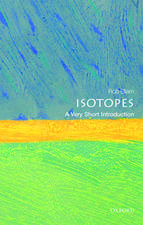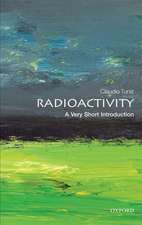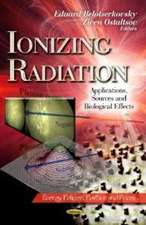Advances in Nuclear Science and Technology
Editat de Ernest J. Henleyen Limba Engleză Paperback – 9 mai 2013
Preț: 404.13 lei
Nou
Puncte Express: 606
Preț estimativ în valută:
77.33€ • 80.96$ • 63.99£
77.33€ • 80.96$ • 63.99£
Carte tipărită la comandă
Livrare economică 05-19 aprilie
Preluare comenzi: 021 569.72.76
Specificații
ISBN-13: 9781461328643
ISBN-10: 1461328640
Pagini: 576
Ilustrații: X, 565 p.
Dimensiuni: 155 x 235 x 30 mm
Greutate: 0.79 kg
Ediția:Softcover reprint of the original 1st ed. 1979
Editura: Springer Us
Colecția Springer
Locul publicării:New York, NY, United States
ISBN-10: 1461328640
Pagini: 576
Ilustrații: X, 565 p.
Dimensiuni: 155 x 235 x 30 mm
Greutate: 0.79 kg
Ediția:Softcover reprint of the original 1st ed. 1979
Editura: Springer Us
Colecția Springer
Locul publicării:New York, NY, United States
Public țintă
ResearchCuprins
Nuclear Physics Data for Reactor Kinetics.- I. Principles of Reactor Kinetics and Data Requirements.- II. Evaluated Nuclear Data Libraries.- III. Fission-Product Nuclear Data.- IV. Data on Delayed Neutrons.- V. Data on Heavy Elements.- Acknowledgments.- References.- The Analysis of Reactor Noise: Measuring Statistical Fluctuations in Nuclear Systems.- I. Introduction.- II. Theory.- III. Models for Interpreting Experiments.- IV. Epilogue.- Acknowledgments.- References.- On-Line Computers in Nuclear Power Plants — A Review.- Abstract.- I. Introduction.- II. Computer Functions and Application Classes.- III. Functions.- IV. Applications Classes.- V. Computer Hardware and Software.- VI. Examples of Systems in Operation.- VII. Ergonomic Factors and Operator Acceptance.- VIII. Reliability.- IX. Obsolescence and Designing for Replaceability.- X. Project Management.- XI. Program and Data Security.- XII. Licensing of Initial Design and Modification During Life.- XIII. Future Development.- XIV. Concluding Remarks.- Acknowledgments.- References.- Fuel for the SGHWR.- I. Introduction.- II. Fuel Design.- III. Operational Experience.- IV. Performance Models: The Seer-Sleuth Computer Code.- V. Behavior in Accident Conditions.- VI. Transient Modeling.- VII. Future Development.- References.- The Nuclear Safety Research Reactor (NSRR) in Japan.- I. Introduction.- II. NSRR Facility and Experimental Capability.- III. Experimental Research Program.- IV. Some Results of the Fuel Failure Experiments.- V. Future Plans.- References.- Practical Usage of Plutonium in Power Reactor Systems.- I. Popular Notions about Plutonium.- II. Historical Perspective and Review of Plutonium Properties.- III. Plutonium Recycle Alternatives.- IV. Current Status and Conclusions.- References.- Computer AssistedLearning in Nuclear Engineering.- I. Introduction.- II. Educational Roles of the Digital Computer.- III. Claims for CAL.- IV. Computers in Nuclear Engineering Education.- V. The Role of Graphics in Computer-Assisted Learning.- VI. Current CAL Projects.- VII. A Typical CAL Program.- VIII. Transferring CAL Materials.- IX. Implementation.- X. Evaluation.- XI. Future Prospects for CAL in Nuclear Engineering.- XII. Summary and Conclusions.- References.- Nuclear Energy Centers.- I. Introduction.- II. Fuel Cycle and Facility Integration.- III. Modular Construction.- IV. Heat Rejection.- V. Conclusions.- References.









